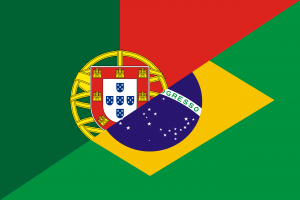Language/Portuguese/Vocabulary/Physical-Descriptions
 Հայերէն
Հայերէն Български език
Български език 官话
官话 官話
官話 Hrvatski jezik
Hrvatski jezik Český jazyk
Český jazyk Nederlands
Nederlands English
English Suomen kieli
Suomen kieli Français
Français Deutsch
Deutsch עברית
עברית हिन्दी
हिन्दी Magyar
Magyar Bahasa Indonesia
Bahasa Indonesia فارسی
فارسی Italiano
Italiano 日本語
日本語 Қазақ тілі
Қазақ тілі 한국어
한국어 Lietuvių kalba
Lietuvių kalba Νέα Ελληνικά
Νέα Ελληνικά Şimali Azərbaycanlılar
Şimali Azərbaycanlılar Język polski
Język polski Limba Română
Limba Română Русский язык
Русский язык Српски
Српски Español
Español العربية القياسية
العربية القياسية Svenska
Svenska Wikang Tagalog
Wikang Tagalog தமிழ்
தமிழ் ภาษาไทย
ภาษาไทย Türkçe
Türkçe Українська мова
Українська мова Urdu
Urdu Tiếng Việt
Tiếng ViệtOlá pessoal! Welcome to Unit 3 of the Complete 0 to A1 Portuguese Course. In this unit, we will be learning how to talk about physical descriptions in Portuguese.
Whether you want to describe yourself or someone else, this lesson will give you the vocabulary to do so with confidence. We'll cover everything from hair and eye color to height, weight, and even clothing. And as always, I'll be sprinkling in cultural information and interesting facts throughout the lesson to help you better understand Portuguese culture.
Let's get started!
Adjectives for Physical Descriptions
When describing someone's appearance, there are a lot of adjectives you can use in Portuguese. Here are some of the most common ones:
| Portuguese | Pronunciation | English |
|---|---|---|
| baixo | buy-shoo | short |
| alto | owl-too | tall |
| magro | mah-gro | skinny |
| gordo | gaw-doo | fat |
| bonito | boh-nee-too | beautiful/handsome |
| feio | fay-oo | ugly |
| forte | for-chee | strong |
| fraco | frah-co | weak |
Remember that some adjectives, like alto and baixo, have masculine and feminine forms. For example, alta is the feminine form of alto.
You can also use adjectives to describe someone's hair and eye color, such as:
| Cabelo || kah-beh-loo || Hair | preto || preh-too || black | loiro || loh-ee-roo || blond | castanho || kah-stan-yoo || brown | ruivo || hwee-voo || red-haired
| Olhos || oh-lyoos || Eyes | azul || ah-zool || blue | verde || vehr-deh || green | castanho || kah-stan-yoo || brown | preto || preh-too || black
Now that you have some adjectives under your belt, let's practice using them in context.
Examples
- A Maria é alta e magra. (Maria is tall and skinny.)
- O João tem o cabelo preto e olhos castanhos. (João has black hair and brown eyes.)
- A minha irmã é baixa e forte. (My sister is short and strong.)
- O meu avô é gordo e tem o cabelo branco. (My grandfather is fat and has white hair.)
Notice how we use the verb 'ser' to link the adjective with the noun it's describing. We'll learn more about this verb in Unit 3.
Clothing and Accessories
When describing someone's clothing and accessories, there are a few specific vocabulary words you should know. Here are some of the most common ones:
|Roupas e Acessórios || Hoh-pas ee ah-seh-soh-rees || Clothing and Accessories | camisa || kah-mee-sah || shirt | calça || kahl-sah || pants | vestido || veh-stee-doo || dress | sapatos || sah-pah-tooss || shoes | chapéu || shah-pay-oo || hat | óculos || oh-koo-looss || glasses
Here's an example:
- A Maria está vestindo um vestido azul e sapatos pretos. (Maria is wearing a blue dress and black shoes.)
You can also use the verb 'usar' (to wear) to describe what someone is wearing or 'vestir' (to dress) to describe the act of getting dressed.
Examples
- Eu estou usando uma camisa vermelha e calça jeans. (I'm wearing a red shirt and jeans.)
- A minha mãe está vestindo um vestido branco e sandálias. (My mother is wearing a white dress and sandals.)
- Os meus amigos estão usando óculos escuros e chapéus. (My friends are wearing sunglasses and hats.)
Conclusion
And that's it for Unit 3: Physical Descriptions! You should now be able to confidently describe someone's appearance and clothing in Portuguese. Keep practicing and building your vocabulary, and soon you'll be speaking like a native.
Join me in the next unit, where we'll be learning about personality descriptions.
Bom trabalho! (Good job!)
Sources

